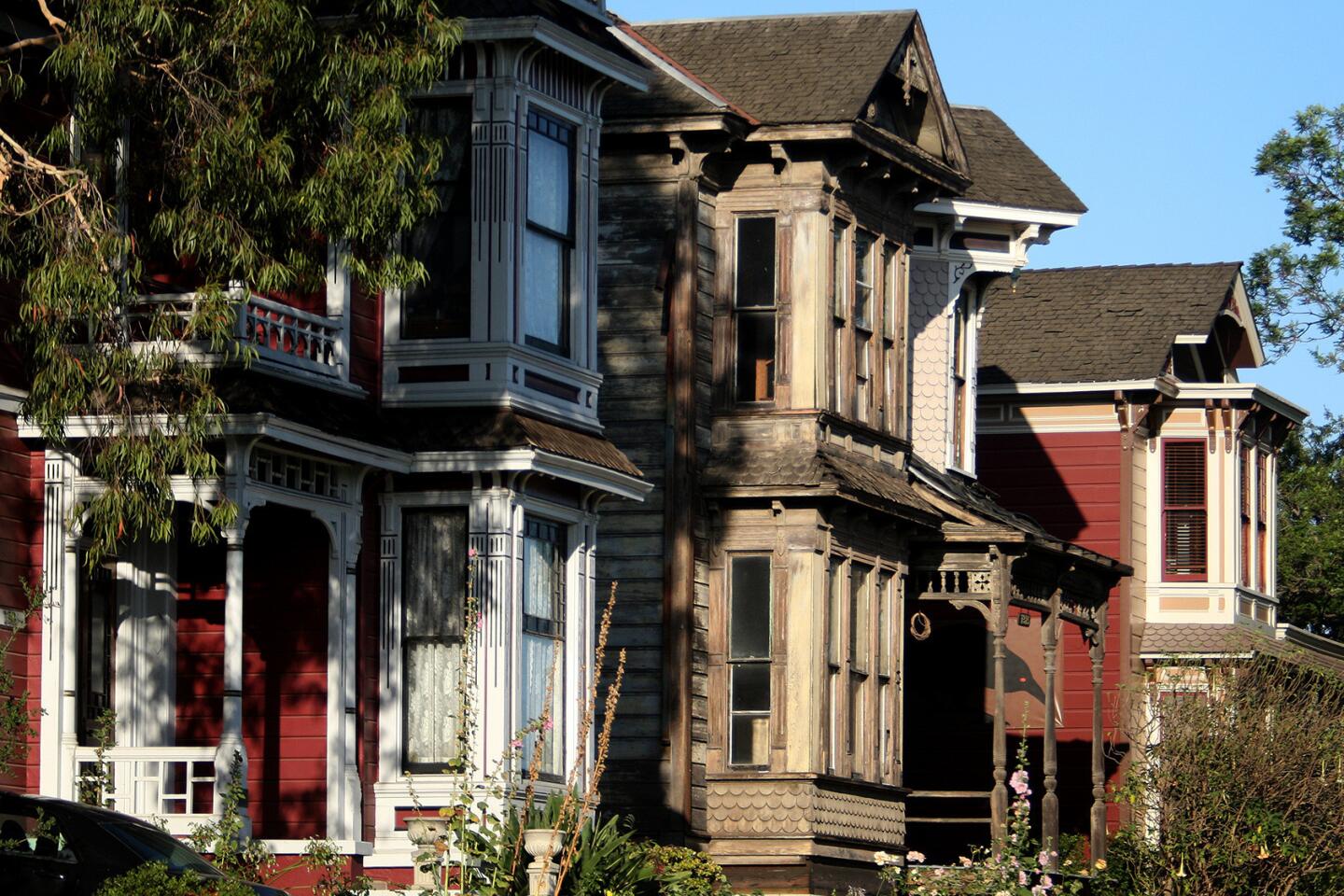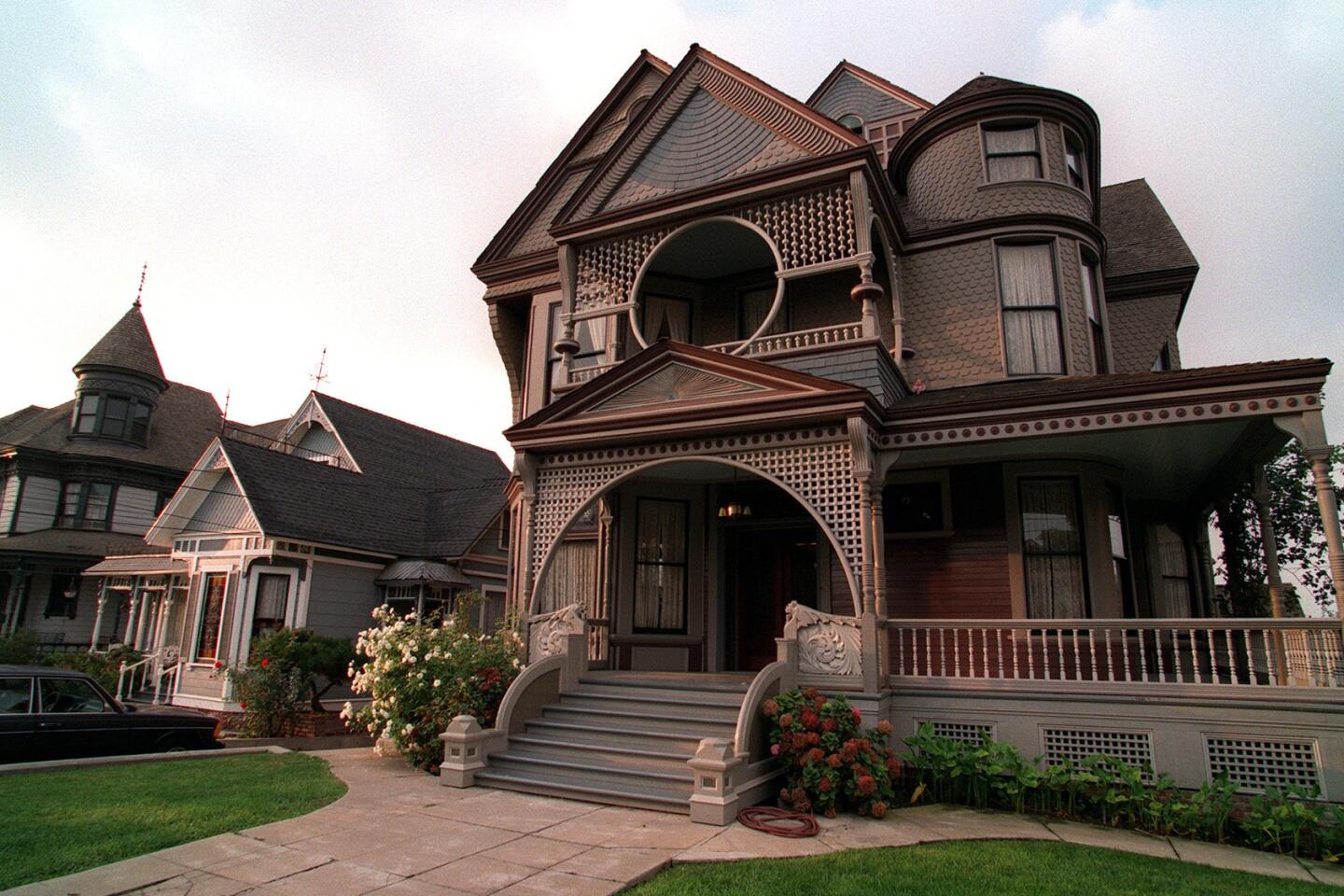Architecture Spotlight: Victorian is a stately, though needy, grande dame
The Victorian era began with the reign of her majesty in 1837, but the namesake architecture came much later to Los Angeles and was the housing style of choice in the area’s first population boom.
Nowadays, people can enjoy the exuberant paint schemes or the intricate filigree above the porch columns. But to own one of these grande dames is a considerable commitment, of both money and time.
“People like to come and visit them. They like the grandeur of it — there’s so much detail, so much decorative architecture,” said Kori Capaldi, executive director of Heritage Square Museum, where several Victorian structures were moved and restored after eluding the wrecking ball in the 1960s and ’70s.
“When you find somebody who is willing to invest their life, basically, in a Victorian house, you find somebody who truly loves their house,” she said.
David Raposa, broker and owner of City Living Realty, which specializes in historic homes in West Adams and University Park, said he loves the tall windows and high ceilings — up to 12 feet in some cases.
“It’s a very warm-feeling type house,” compared with the “stucco boxes” of the 1980s and 1990s, said Raposa, who owns Victorian homes near USC that he rents out.
In 1885, the Santa Fe Railroad arrived in Los Angeles, sparking a competition with the Southern Pacific that drove transcontinental fares down to just $1. From 1880 to 1900, the city grew from 11,000 people to more than 102,000.
The railroad carried a flood of Easterners and Midwesterners as well as materials to build houses like the ones they knew back home. Those Victorian homes, now seeming as dainty and delicate as dollhouses, were in large measure factory-produced, said Kenneth Breisch, associate professor of architecture at USC.
Thanks to the Industrial Revolution, intricate spindles, newel posts and columns were all spun by the thousands on mechanical lathes, then offered in catalogs to prospective owners. “There might be five pages of the little bulls-eye details that go in the corners of doors,” he said.
But Breisch said the Victorian homes soon faced pressures from many sides.
Developers, wanting Southern California to look exotic and new — not identical to what folks just left behind — promoted the Mission Revival style to go with a mythologized history of the region. Also, after 1900, “the modern housewife didn’t want to spend all her time dusting all that woodwork.” And the population boom demanded apartments and office buildings where large single-family homes once stood.
As downtown became denser and more commercialized, residents sold their homes and saw them subdivided into tenements or demolished for new construction, particularly on Bunker Hill, which once abounded with stately Victorians. The homes that remained became shabby and run-down, nothing like the jewels they once were. Downtown’s former residents, meanwhile, headed west to new upscale neighborhoods such as Beverly Hills and Bel-Air.
Then came the 1970s, when a preservation movement bloomed nationwide, Breisch said, and “there was a growing nostalgia for what survived.”
Restorers moved into downtrodden neighborhoods and resurrected the Victorians. An entire block of Carroll Avenue, in Angelino Heights, Los Angeles’ first suburb, was named to the National Register of Historic Places in 1976.
But now Victorian homes are facing a familiar threat. Those that aren’t already protected by landmark status often sit on land that’s much more valuable with a multifamily home.
“I get calls every couple of weeks from developers and real-estate people,” Capaldi said, telling her they want to build 50 apartments where now stand a 1908 Craftsman and an 1890 Victorian.
Style: Victorian
Features: Steeply pitched roofs, gables, turrets, wood construction, multiple vibrant paint colors to highlight the variety of design elements, elaborate embellishments and gingerbread detailing, especially along broad porches, usually at least two stories, often with a mixture of decorative shingle or clapboard exteriors
Where to find them: Angelino Heights (particularly Carroll Avenue), West Adams, University Park, Lincoln Heights, Echo Park, Pico-Union, Windsor Square, Pasadena
Prominent architects: James H. Bradbeer & Walter Ferris, Ezra Kysor, Theodore Eisen, Frederick Roehrig, Joseph Cather Newsom









